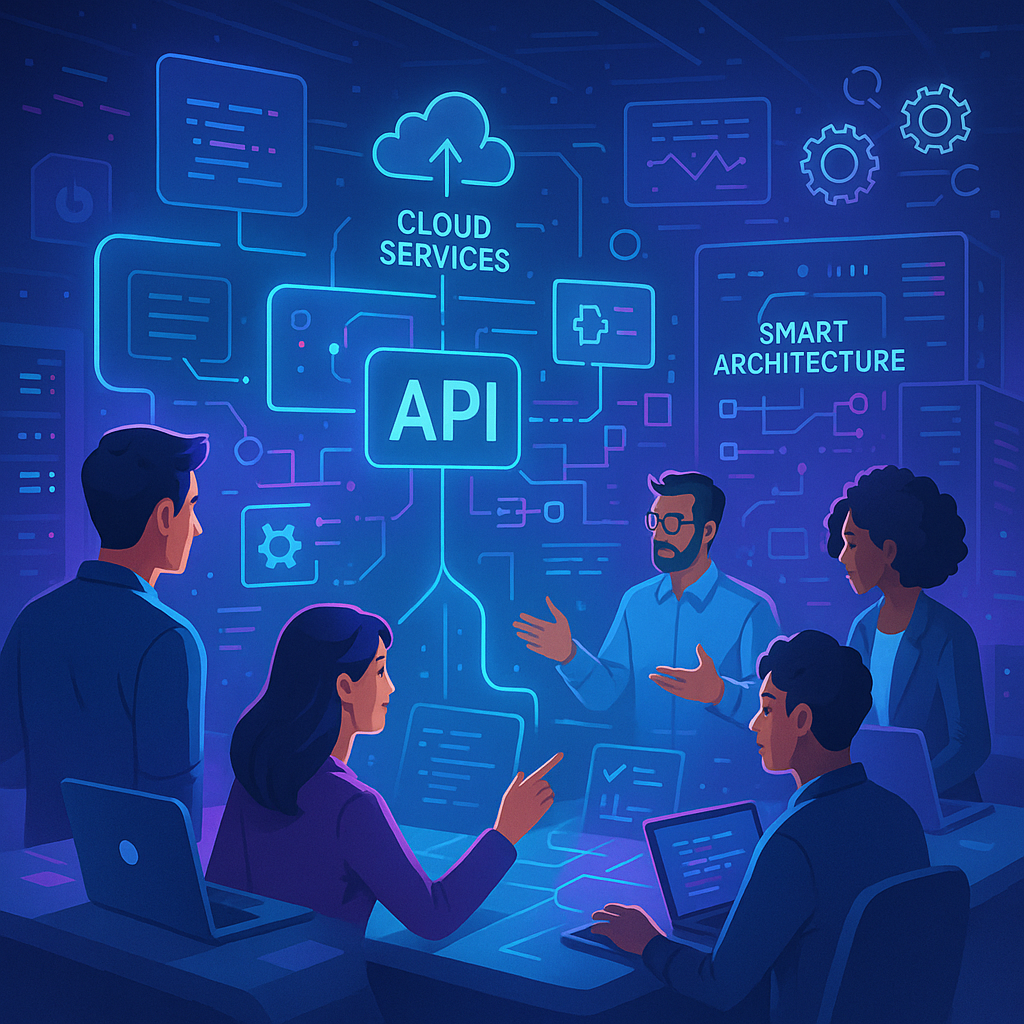In today’s tech scene most apps need to run on various gadgets — from phones and computers to wearable tech. To make this happen without a hitch, coders take an API-first path. But what’s this all about? Let’s break it down.
🤔 What Does API-First Mean?
When we talk about API-first, we mean that we build the Application Programming Interface (API) before we tackle the rest of the app. Think of an API as a bridge that lets different parts of a system — or even different apps — chat with each other.
In an API-first setup, the team settles on the API design before they start on the front-end or back-end code.
🎯 Why Go API-First?
There are some good reasons to use this approach:
- ✅ Work in Parallel — Backend and frontend teams can work at the same time without holding each other up.
- ✅ More Flexibility — The API stays stable, so you can add new features or even new types of apps with ease.
- ✅ Consistency Everywhere — Web apps mobile apps, or smartwatch apps can all use the same API.
- ✅ Easier Testing — The API is ready making testing smoother and quicker.
🧠 Steps to Create API-First Apps
If you want to try an API-first approach here’s a simple plan:
✍️ 1. Start with API Design
Work out all the inputs and outputs your app will need. Tools like Swagger/OpenAPI can make this job easier.
🛠️ 2. Choose the Right Tools
Use Postman or similar tools to check your API as you design it. This helps you spot mistakes .
🔄 3. Give Your API Versions
Each time you make a big change, assign the API a new version number. This allows old apps to keep using the previous version.
🧪 4. Run Thorough Tests
Before you build the UI, check that the API works as planned. Write tests and run them often!
🖥️ 5. Build the Front-End
Once the API works well, you can create your app’s interface — as a website, phone app, or desktop tool.
🌍 Real-World Examples
Some companies have used API-first design for a long time:
- Twitter and Facebook provide public APIs so other apps can use their data.
- Stripe and Twilio based their entire business on user-friendly APIs.
- Spotify made APIs so people can create tools to control music or add it to other services.
